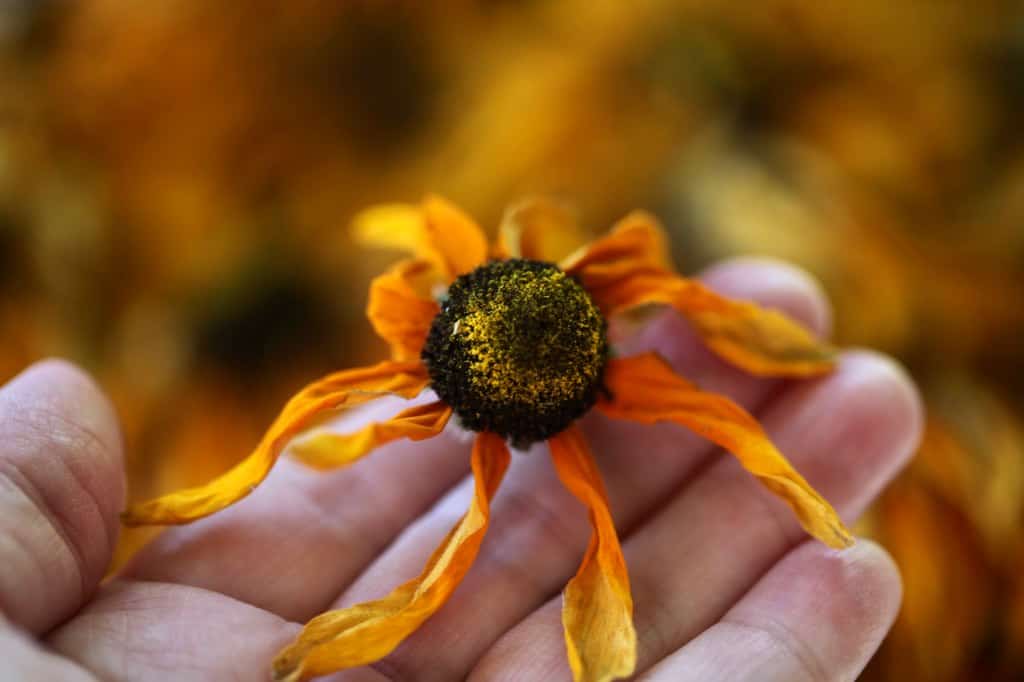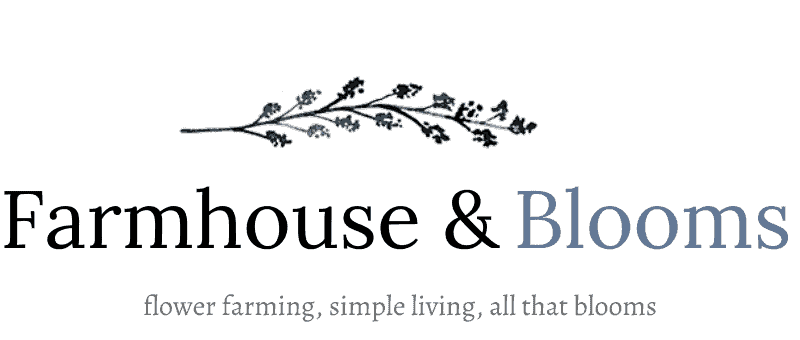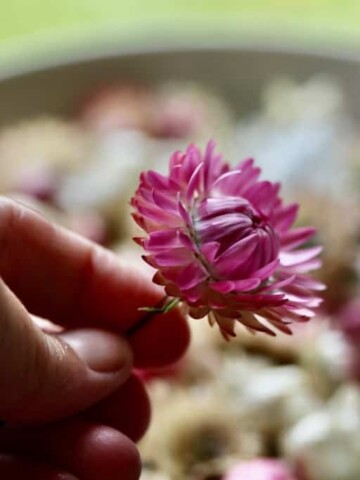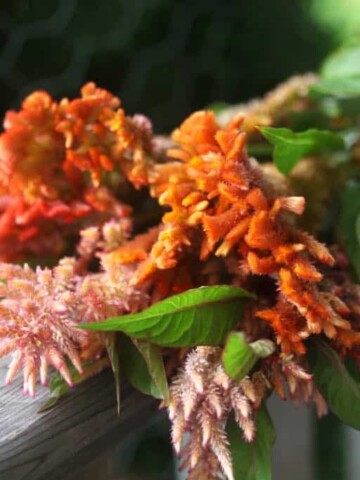Black-eyed Susans, also known as Rudbeckia, are brightly colored cottage garden flowers that are easy to dry. You can use the dried flowers in fall harvest arrangements, for a beautiful autumn design, or in all sorts of other creative projects. Learn how to dry black-eyed Susans, and preserve your beautiful flowers for future use.

As a gardening enthusiast and cut flower grower, I find that black-eyed Susans are easy to grow, and are a delightful addition to any garden. Not only are they stunning with their bright yellow petals and dark centers (mostly), but these short-lived perennials are also sought after for their use in floral arrangements and home decor.
With their vibrant colors and easy maintenance, many of us might wonder how to dry these cheerful flowers, to preserve their beauty even after their growing season is over. This is especially true if you have an abundance of blooms for cutting, and have extras which you would like to dry and preserve.
One thing I love about having lots of extra flowers in the garden in late summer, is the opportunity for drying them. It's a great time of year to do crafting, and to make projects using these gifts from the garden.

Are Black-Eyed Susans Good For Drying?
Drying black-eyed Susans isn't as difficult as it may seem. In fact, with just a few simple steps, you can enjoy these lovely flowers all year round. Whether you're new to flower drying, or a seasoned professional, this guide will help make the process as seamless as possible.
These flowers are very easy to dry, and the final preserved blooms maintain their color and shape fairly well. All in all I would say that these blooms are great options for drying, and can be easily used in your dried flower projects to add a bit of sunny color.

Choosing Black-Eyed Susans For Drying
Before diving into the specifics on drying the flowers, it's important to understand that starting with the right flowers is crucial.
Look for blooms that are in their prime, and fully open, but not yet fading. This will ensure that the dried flowers retain their color and charm, and be the best that they can be.
There are quite a few varieties of Rudbeckia that are great choices for drying. Use your favorites, and those that you have on hand in your garden.
I love the look of the small flowered Rudbeckia triloba, with it's airy stems and tiny blooms. Rudbeckia chim chiminee is also a fun flower to dry, with it's funky straight pencil-thin petals.

Select The Best Blooms
When I'm preparing to dry black-eyed Susans, I make sure to choose the healthiest blooms. These are the ones with vibrant colors, sturdy stems, and no visible damage.
You will often find little holes or munched areas on some of the petals, made by hungry insects. Avoid these blooms if possible.
Sometimes the flowers can be covered in weed seeds as well, due to the fine hairs on the surface of the plants, that tend to catch the small seeds as they drift in the air. If the flower is good otherwise, try to brush the seeds off the surface of the petals if you can.

Harvesting The Flowers
As with other types of flowers harvested for drying, the best time to harvest your black-eyed Susans for drying is in the late morning, after the dew has evaporated, but before the sun has reached it's peak.
This is the time of day when the flowers are most hydrated, but the outside structures are dry. It's important to have the flowers in the best shape for drying, for the best results.
Harvest on a dry day with low humidity. High humidity can slow down the drying process, and lead to molding.

I like to harvest the flowers with full stems, so that they can be placed in a bucket for conditioning before drying.
If you plan to harvest only the flower heads, make sure to leave at least one inch of stem on the flower, to make it easier to handle during the drying process.
You can also harvest the whole stem, and then cut the flowers off later, after they have been conditioned.

Preparation For Drying
Gently remove the leaves from the lower part of the flower stems. Leaves can hold moisture and may cause the flowers to rot or mold during drying.
Using scissors or pruning shears, cut the stems to your desired length. Keep in mind that shorter stems will dry faster.
Ensure that the flowers are free from dirt, garden debris, and insects. You can gently shake them or use a soft brush to remove any unwanted particles.
It's always a good idea to condition your flowers prior to drying them. To do this, allow the the cut flowers to soak in a container of water or conditioning solution, for several hours before drying.


How To Dry Black-Eyed Susans
Once the flowers have been conditioned, it's time to start the drying process.
Air Drying Technique
One of my favorite techniques for drying black-eyed Susans is the air drying method. It's a simple and natural process, making it perfect for beginners.
You can choose to air dry the flowers several ways. Air dry the flowers by bundling them and hanging them upside down, or alternatively, drying them upright in a vase.

1. Hanging To Dry
Hanging to dry is an easy method for drying black-eyed Susans.
Gather a small bundle of flowers, making sure the flower heads don't touch each other. Use rubber bands to hold the stems together.
These bands will maintain some pressure on the stems as the flowers dry, helping to prevent any of the flowers from slipping out as the stems shrink, and falling onto the floor.
Hang the bunches on a drying rack or a drying line. You can even use knobs or hooks if you are drying in smaller amounts.

I usually use clothes pins fastened to the rubber bands, and then to the drying line, to secure the flower bunches on the drying line.
However you can also use reconfigured paper clips, which work just as well. Just shape the clips so that they hook onto the flower bunch at the bottom, and onto the drying line at the top.

Dry the flowers in a dry and warm environment with good air flow, and away from any direct light, which can fade the blooms.
Allow the flowers to dry for several weeks until completely dry.
Hanging the flowers to dry can cause the petals to dry in an upwards position (as they hang down), giving them a windswept look. Keep this in mind when using this technique.

2. Drying Up Right
This is one of the easiest methods for drying your black-eyed Susans.
Choose a clean container with about an inch or two of water in the bottom. Allow the flowers to sit in the water, and then do not refill once the water is absorbed.
The flowers will begin to dry as they rest in the container in an upright position.
Remove the dry flowers from the container once completely dry. It can take up to two weeks using this method.


Silica Gel Method
For those seeking a faster drying alternative, I recommend using silica gel to dry your black-eyed Susans. This method speeds up the process and retains the flowers' vibrant colors.
Start by obtaining a sealable container and pouring a layer of silica gel crystals into the bottom.
Arrange your flowers face-up on the silica gel.
Gently pour more silica gel crystals around and over the flowers, covering them entirely.
Seal the container and wait 2-3 days, depending on the thickness of the petals. Check periodically for dryness, and remove once they are dry.

Pressing The Flowers
Black-eyed Susans can be pressed, however this method of drying works best with flowers with a smaller centre disc.
If the centre disc is large, it may complicate the drying process, leading to mold formation, and it may be best to just press the flower petals instead.
The best option for pressing these blooms is to use a flower press.
Press between layers of paper and cardboard, with the flowers sandwiched between the layers. Press the flowers for approximately one month, checking on the drying process periodically.

Storing The Dried Flowers
Once you have successfully dried your black-eyed Susans, it's important to store them properly to ensure they maintain their vibrant colors and beauty. For best storage the dried flowers should be protected, and maintained in a dry environment.
Choose a good airtight container for storing your flowers. A clear plastic storage bin with a lid is a good option, as it provides a clear view of the flowers while also offering some protection.
Store in a dark and dry location, which is low in humidity for best long-term storage results.
Check on the stored flowers periodically to ensure there are no signs of mold, insects, or other issues.

Creative Uses For Dried Black-Eyed Susans
Displaying dried black-eyed Susan flowers thoughtfully not only enhances their beauty, but can also help in prolonging their lifespan.

Here are some suggestions for showcasing these dried blooms in ways that highlight their natural charm, while keeping them looking fresh for longer:
Framed Arrangements
Dried black-eyed Susans can be used to create a 3D effect by arranging the flowers in a shadow box. This protects the flowers from dust and direct sunlight, which can fade the colors.
The pressed flowers also look lovely arranged in a glass frame. Make sure to keep these frames away from high humidity and direct sunlight, which can damage the blooms.
Floral Wreaths And Garlands
Craft a wreath or garland by wiring dried black-eyed Susans onto a base. This creates a rustic look, and these pieces can be used to adorn doors, walls, or mantlepieces in your inside space.
Avoid using to decorate your outdoor spaces, due to the risk of exposure to a wet environment and humidity, which can damage the flowers.
To minimize damage and fading, avoid placing them in areas with high humidity or direct sunlight.

Dried Flower Bouquets
These dried flowers look great in dried flower arrangements. Arrange dried black-eyed Susans in bouquets with other dried flowers and foliage for a lasting display.
Use a dry vase (no water) and place it in a part of your home that gets indirect light, to avoid fading.

Decorative Bowls Or Trays
Scatter dried petals or smaller blooms in decorative bowls or trays as a unique centerpiece. You can mix them with other dried elements like pine cones, dried citrus slices, or cinnamon sticks for a seasonal display.
Scented Potpourri
Combine dried black-eyed Susan petals with other dried flowers, essential oils, and spices to create a decorative and fragrant potpourri. Display the potpourri in open bowls or sachets.

Conclusion
Drying and displaying flowers connects us to the cycles of nature, and the art of preservation reminds us of the beauty in every stage of life.
The process of drying black-eyed Susans is no exception. As you dry and display your flowers, let your creativity flow and your spaces be inspired.
So, gather your blooms, explore the different ways to showcase them, and let the humble black-eyed Susan remind you of the enduring beauty of nature, perfectly preserved.

Have you ever dried black-eyed Susans from your garden? Be sure to leave a comment below to share your experience!
Other Posts You May Like:
PIN IT FOR LATER!










Leave a Reply